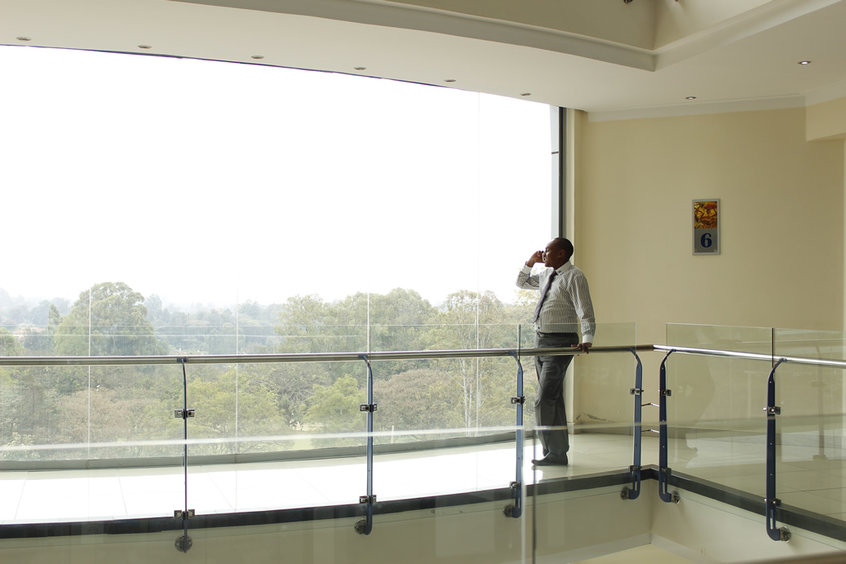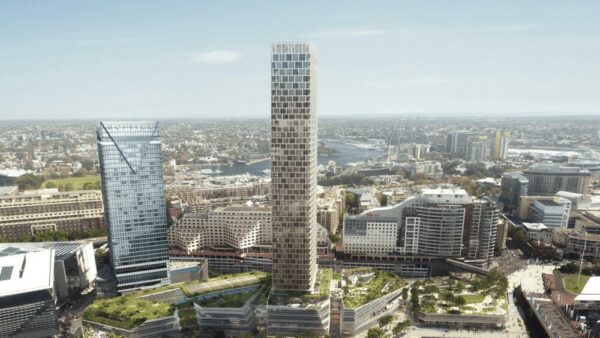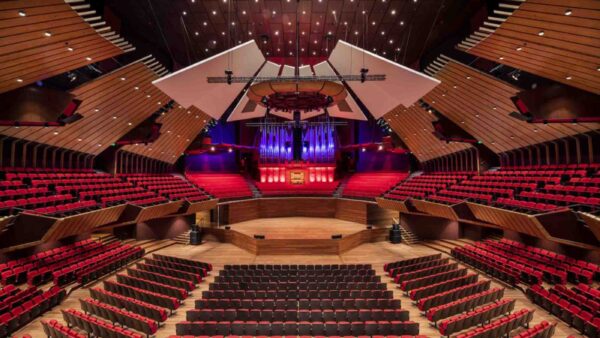African developers and architects must ‘stop copying the West’ by erecting tall, glazed commercial buildings that waste vast amounts of energy to cool, and instead develop styles that suit hot climates, a leading architectural academic said this week.
Musau Kimeu, chair of the University of Nairobi’s Department of Architecture and Building Science, said glazed towers and malls are being built all over East Africa now, creating a serious drain on scarce energy.
“We must stop copying the West and instead design buildings that are suitable to our tropical climate,” Kimeu told a workshop organised by UN-Habitat in Kenya this week.
They give good visual impressions but they are not as sustainable– Musau Kimeu, University of Nairobi
“We must pursue sustainable building design strategies to construct buildings that have exemplary humane qualities and that resonate well with the locale,” he added, according to Rwandan newspaper, The New Times.
UN-Habitat estimates that 56% of the total energy generated in developing countries is used in urban buildings, consuming more energy than the transport or industrial sectors.
“We have seen several buildings with glazed windows constructed in Kenya, Uganda, Tanzania and Rwanda in the recent past,” Kimeu told attendees to the workshop, organised for journalists on the subject of sustainable construction.

Promotional photograph, inside Waiyaki Way office tower, Nairobi (Instantoffices.com)
“Well, they give good visual impressions but they are not as sustainable,” Kimeu said.
He said building designs should balance the need for natural lighting and cross-ventilation with protection against the sun.
“We need to localise the architecture we see from Europe and make it suitable for our region,” he said.
Kimeu’s views were echoed by Vincent Kitio, chief of UN-Habitat’s Urban Energy Unit.

Musau Kimeu, chair of the University of Nairobi’s Department of Architecture and Building Science (University of Nairobi)
“[A] huge amount of energy is wasted every day during the construction and the operation of buildings in the region,” said Kitio, adding that most modern buildings in sub-Saharan Africa now are replicas of Western designs.
“As a result, such buildings are heavily reliant on artificial means for indoor comfort in terms of cooling, heating, ventilation and lighting. This is due to inefficient designs and use of unsuitable materials which have resulted into tremendous energy waste, high electricity bills, air pollution and green house emission.”
Musau Kimeu urged governments in the region to encourage sustainable design, and said banks should offer lower interest rates to developers of green buildings.
Top photograph: A new serviced office tower at Waiyaki Way, Nairobi, Kenya (Instantoffices.com)
Comments
Comments are closed.







While largely agreeing with the opinion that just copying a building model in one region without taking into account local conditions elsewhere is usually a flawed idea, it is equally wrong to talk about “African conditions”. Building in coastal regions in Thailand, Kenya and say Florida offers the same challenges and may well lead to similar designs. Building in Nairobi confronts the architect with a set of very different conditions then when building in Mombasa. Let’s be a bit more nuanced here.
‘Gleaming” glass towers seem to be the design of choice in the Middle East also. This is often the client choice so you are left wondering is it an education/awareness thing or lazy architectural design. It is good to see an African achitectural academic raise the subject, and not just have Western sustainability engineers appear to be driving their agenda.
It would appear that the Prof’s comments are somewhat misguided in terms of his belief that ‘Western design’ cannot work in Africa as there are a plethora of energy efficient examples that could be used to counter this argument. He is correct in stating that too many buildings rely on energy hungry air-conditioning plant to keep their buildings cool and that better means of achieving this should be implemented, but that doesn’t need to mean we exclude glass in buildings, just design build to better work within the local climatic conditions that exist in the location where the tower is to be constructed. What needs to happen is that designs should be aligned with the principles of green building and employ either greater energy efficient design principles or greater natural ventilation with the likes of night time cooling being employed. The building shown as an example does appear to have been designed with the climate in mind with the use of water around the base another means of reducing the ambient temperature and assisting in keeping internal temperatures lower whilst the glass used appears to reduce the transmission of solar radiation into the building whilst also allowing for natural ventilation with operable windows.
Thanks for all the comments. Why are we against 100 % glass in the tropic? If you park your car under the sun, the in-door will heat up and you need to cool it by opening the door or using AC. This is called “green house effect”. Window to wall-ratio should not exceed 30-40%. In other words, the size of the windows should not exceed 30-40 % of the wall in the tropics. As you build in the tropical countries, there are mandatory strategies that need to be applied: (1) proper orientation according to the sun paths; (2) building forms: compact forms for hot and arid climate and narrow plan for hot and humid climate like Dar and Mombasa; (3) solar protection with sun shading devices (these devices have disappeared from modern architecture- it is a pity); (4) natural ventilation; (5) day-lighting; (6) proper acoustic; (7) passive heating (in highland like Nairobi, Eldoret, Meru, you need to heat your building some time between May-August ); (8) proper building materials for the envelop (proper understanding of the thermal characteristics (U-value) of the building materials); (9) make provision for rain water harvesting in an effort to promote resources efficiency; (10) make use of renewable energy sources that are available locally: this include solar energy for heating water or generating electricity; (11) adopt a proper sanitation system – biogas system if possible; (12) planting trees when ever possible to reduce paving area that builds up eat around the building, etc. This is just to mention few strategies that need to be integrated in the design of a building to make it resources efficient and environmental friendly. Most of these recommendations are presented in a handbook on Sustainable Building Design for Tropical Countries with particular focus on East Africa Climate. The publication can be downloaded for free on UN-Habitat website. http://unhabitat.org/books/sustainable-building-design-for-tropical-climates/
Interesting piece